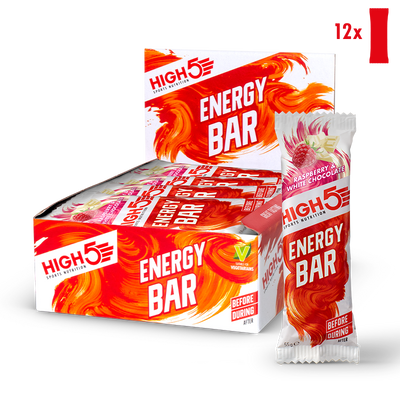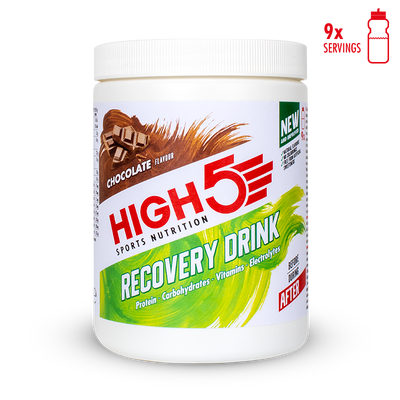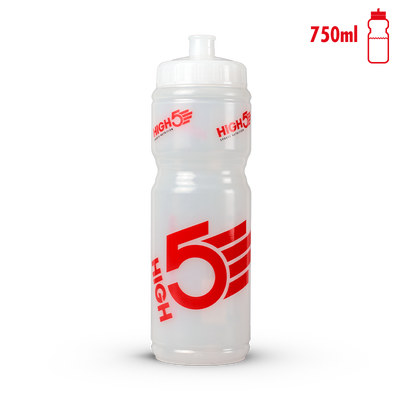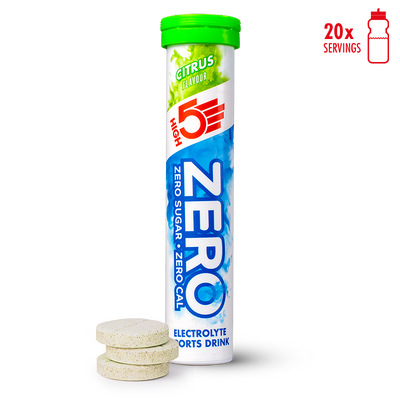If you're a runner, you've probably felt it before: that frustrating sensation of heavy legs that seems to drag you down, as if invisible weights are tied to your feet. It's a perplexing and common experience, leaving many to wonder: why does this happen?
The reasons are varied, from wrong shoes and poor running form to poor circulation or insufficient glycogen stores in your body. This issue isn't just a nuisance; it seriously hinders your running performance and the effectiveness of your training sessions.
In fact, studies show that a significant number of runners experience this phenomenon at some point, which can lead to decreased motivation and performance.
This comprehensive guide includes everything you need to know about heavy legs while running so that you always stay on top of your running track.
Pro Tip: Sometimes, dehydration can also lead to heavy legs. Keep yourself hydrated and maintain adequate electrolytes in your body to avoid this problem.
What are Heavy Legs when Running?
Heavy legs when running refer to a sensation of increased difficulty during running as if your legs are carrying extra weight. It is the feeling when your legs feel tired, making each step more difficult than usual. Heavy leg sensation makes your legs feel tired and impacts your performance, endurance, and overall running experience.
How to Overcome Heavy Legs When Running Summary
Below, we have added a summary to introduce you to the key takeaways from this article:
- Understanding Heavy Legs: The sensation of heavy legs during running can be due to various factors including poor biomechanics, muscle fatigue, running on hard surfaces, inefficient running form, and inappropriate footwear.
- Biomechanics and Muscle Fatigue: Poor circulation, muscle tiredness, and imbalances in muscle engagement can lead to heavy legs. It's crucial to distinguish between muscle fatigue and cardiovascular endurance to target specific muscle groups for conditioning.
- Impact of Running Surfaces and Form: The surface you run on and your running form significantly affect leg fatigue. Adjusting your route to include varied terrains and refining your running form can help alleviate heavy legs.
- Footwear Considerations: The right running shoes are essential for preventing undue leg stress. Proper shoe fit and support can mitigate the impact on your legs.
- Prevention and Management: Incorporate dynamic stretches in your warm-up, ensure proper hydration and nutrition, and engage in strength training to build muscular endurance. Listening to your body and opting for rest or low-impact activities when experiencing sore legs can aid in recovery and prevent overtraining.
Running Legs Tired but Not Out of Breath? 5 Reasons for Heavy Legs when Running
Ever experienced the paradox of feeling physically exhausted in your legs while your respiratory system seems unaffected? This common occurrence often leaves most runners perplexed.
Picture this scenario: you're mid-run, and your legs begin to protest, feeling heavier with each step, yet your breathing remains steady and controlled. It's a puzzling occurrence that often leaves even seasoned runners scratching their heads. Initially, you may mistake it for muscle cramps, but they are different.
Let's understand the common reasons why your legs feel heavy when running.
1. Biomechanics at Play
The biomechanics of running involve a delicate balance between various muscle groups and joints. Tired and heavy legs could stem from poor circulation, muscle tiredness, poor running form, or imbalances in muscle engagement. Understanding the biomechanical intricacies is the first step in addressing this paradox.
2. Muscle Fatigue vs. Cardiovascular Endurance
Distinguishing between muscle fatigue and cardiovascular endurance is crucial. While your legs may experience fatigue due to localised stress and strain, your respiratory system might efficiently supply oxygen to your body. This discrepancy highlights the need to target specific muscle groups for optimal conditioning.
3. Impact of Running Surfaces
The type of surface you run on contributes significantly to what your legs feel and the fatigue patterns in your legs. Hard surfaces can increase the impact on your joints and muscles, leading to quicker fatigue. Exploring varied terrains and adjusting your running route can alleviate this impact.
4. Running Form and Efficiency
Your running form is pivotal in distributing the workload among various muscles. Inefficient form, such as overstriding or improper foot placement, can result in disproportionate stress on certain muscle groups, intensifying leg fatigue.
5. Wrong Footwear
Ill-fitting or wrong shoes, along with poor running form, can exacerbate heavy legs when running. The alignment of your body and the support your shoes provide play pivotal roles in mitigating impact. Selecting the right running shoes and refining your running form is essential to prevent undue leg stress.
Often, the causes of heavy legs when running are the common factors you ignore. From biomechanics to muscle dynamics and strategic interventions, you can transform the paradox of tired legs by giving attention to these underlying causes.
Quick Tip: If you’re aiming to run a marathon and looking for a foolproof training plan, check out our guide to learn how to train for a marathon.

Should I Run with Heavy or Sore Legs?
The age-old dilemma: to run or not to run when your legs are still recovering. Let's delve into the science behind running with sore legs, carefully weighing the risks and benefits.
Understanding the Dynamics
Before deciding whether to lace up your running shoes, assess the severity of your leg soreness. Mild discomfort from muscle cramps may be manageable, but persistent or acute pain signals potential issues that require attention.
Running with sore legs increases the risk factors of overtraining, which can lead to chronic injuries and burnout. Overtraining occurs when the body doesn't have sufficient time to recover between workouts, resulting in cumulative fatigue.
Sore legs can alter your running biomechanics, affecting your form and potentially leading to compensatory movements. The altered form may contribute to injuries, particularly if it persists over multiple runs.
Benefits of Active Recovery
Poor blood circulation can also contribute to tired and heavy legs. Gentle running can stimulate blood flow to the muscles, aiding in the delivery of oxygen and nutrients. This can potentially accelerate the recovery process by reducing muscle stiffness.
For some runners, a light jog with sore legs provides a psychological boost. The endorphin release from a short run might contribute to an improved mood and mental well-being.
How to Decide?
Listen to Your Body
Pay attention to your body's signals. A light jog may be acceptable if the soreness is for just a few hours or minutes, feels more like fatigue than pain and doesn't worsen during the run. However, sharp or increasing pain or other aches, such as stomach pain when running, should be a red flag to abstain.
Consider Alternative Activities
Opt for low-impact activities like swimming or cycling as alternatives to running. These activities provide benefits for cardiovascular disease without subjecting your legs to the impact of running.
Prioritise Rest and Recovery
Sometimes, the best choice is to prioritise rest days and recovery. Adequate seven to nine hours of sleep, proper hydration, and targeted stretching or foam rolling can contribute significantly to the healing process.
Navigating the decision to run with heavy or sore legs requires understanding your body and its signals. You can make informed choices that align with your overall well-being and training plan by weighing the risks and benefits.
How to Stop Stomping When Running?
When your legs feel heavy, you may stomp a lot during running. Excessive stomping not only hampers your running efficiency but can also contribute to heavy legs when running. Explore biomechanical aspects, running techniques, and exercises designed to reduce impact and promote a more graceful, fluid running style.
Biomechanical Aspects
Evaluate your foot strike and gait pattern. Work on landing midfoot rather than with a heavy heel strike, which can contribute to stomping. Consider consulting with a professional for a gait analysis to identify specific areas of improvement.
Running Techniques
Focus on increasing your cadence, the number of steps per minute. A quicker cadence often leads to a lighter, more controlled landing. Engage your core muscles to stabilise your body and reduce excess vertical movement, promoting a smoother stride.
Exercises to Reduce Impact
Incorporate strength training exercises that target your lower body, emphasising muscles involved in running. This can enhance your overall stability and reduce the impact of each stride. Plyometric exercises can also improve your ability to absorb shock.
By paying attention to these biomechanical aspects, refining your running techniques, and incorporating targeted exercises, you can get back into running more quickly and efficiently.
How to Keep Running When Your Legs Are Tired? 3 Practical Strategies
Pushing through fatigue requires mental resilience and strategic approaches. Keeping your momentum when your legs start to tire is a true test of a runner's mettle. Here are some practical strategies to ensure you keep going strong, even when your legs are pleading for respite:
1. Mental Resilience Techniques
Develop a mental toolkit to combat the weariness. Visualisation, positive self-talk, and mindfulness can help shift your focus away from the fatigue, allowing you to tap into your inner reserves. Positive self-talk involves affirming and encouraging statements, reinforcing a mindset of endurance. Mindfulness techniques can enhance your mental resilience during challenging runs.
2. Strategic Pacing Adjustments
Evaluate your pace and consider making gradual adjustments to accommodate your tired legs. Sometimes, a slight shift in speed can ease the burden on your muscles and extend your overall endurance. Implementing strategic pacing, such as slowing down on inclines or adopting a steady pace, helps distribute the workload more evenly, preventing premature fatigue.
3. Training Modifications
Regularly review and modify your weight training regimen to prevent monotony and overuse injuries. Introduce variety by incorporating different terrains into your runs, which engages various muscle groups and reduces repetitive stress in specific areas. Adjust your running intervals, alternating between periods of intensity and recovery. Cross-training, including activities like cycling or swimming, provides a welcome change, allowing fatigued leg muscles to recover while maintaining cardiovascular fitness.
Remember, a combination of mental fortitude and thoughtful adjustments can be the key to maintaining your stride, even when your legs are longing for a break. Moreover, follow the right marathon nutrition plan when running long distances to boost your energy production and avoid fatigue. With healthy sources of carbohydrates, such as HIGH5 energy bars, you should find yourself with plenty of energy – and legs that are less fatigued!

How to Prevent Muscle Fatigue While Running? 4 Effective Tips
When it comes to treating heavy and tired legs, prevention is the best cure. Explore pre-run rituals, nutritional considerations, and weight training methodologies aimed at staving off muscle fatigue before it sets in, ensuring that each run is a triumph rather than a struggle.
1. Pre-run Rituals
Establish a comprehensive warm-up routine that includes dynamic stretches and activation exercises. This primes your muscles, enhancing their efficiency and reducing the risk of early fatigue. Optimizing your pre-run nutrition—from meals to snacks and energy gels—can significantly impact your performance.
2. Nutritional Considerations
Learn what to eat before running to address your nutritional requirements. Fuel your body with a balanced pre-run meal that combines complex carbohydrates, lean proteins, iron-rich foods and healthy fats. Proper hydration is equally crucial; ensure you're adequately hydrated before hitting the pavement.
3. Training Methodologies
Incorporate a strength training plan into your regimen to build muscular endurance. Target key muscle groups used while running to foster resilience during longer distances. Periodise your weight training to allow for adequate recovery, preventing cumulative fatigue.
4. Strategies for Equilibrium
Regaining equilibrium involves a multifaceted approach. From targeted strength training exercises to mindfulness techniques during runs, equilibrium strategies can harmonise the demands on your legs with your cardiovascular capacity. Achieving this balance minimises fatigue and optimises your overall running experience.
Integrating these elements into your running routine creates a foundation that mitigates muscle fatigue, setting the stage for consistently triumphant runs.
Why Do My Legs Ache After Running? Decoding the Mystery
Sometimes, continuing to run while experiencing heavy legs may lead to leg pain after running. Post-run leg aches can be more than just a sign of intense heavy leg workouts. From tired muscles to underlying issues, discover the potential culprits behind your heavy legs and learn strategies to alleviate the discomfort effectively.
Muscle Fatigue
The most common culprit behind post-run leg aches is good old muscle fatigue. Running engages various muscle groups, and the repetitive impact can lead to microscopic damage in muscle fibres. As these fibres repair and strengthen during recovery, you might experience soreness.
Inadequate Warm-up or Cool Down
Neglecting warm-up and cool-down routines can amplify post-run leg aches. A proper warm-up prepares your muscles for the impending workload, while a structured cool-down aids in gradually transitioning to a resting state. You must opt for dynamic warm-up exercises and stretching techniques tailored for runners to fend off heavy legs.
Hydration and Nutritional Impact
Dehydration and inadequate nutrition can manifest as post-run leg aches. Your muscles rely on proper hydration and nutrition for optimal function. HIGH5 Isotonic Hydration and Recovery Bars are designed to keep you energized and hydrated. Opt for effective hydration strategies and nutritional guidelines tailored for runners to enhance recovery and minimise post-run discomfort.
Recognising Warning Signs
Recognising warning signs during and after running is crucial for preventing injuries and ensuring long-term well-being. Distinguishing between normal post-run soreness and potential warning signs of injury allows you to take timely action. Some key aspects to consider when identifying warning signs include;
- Persistent pain
- Localised swelling or inflammation
- Consistent fatigue
- Sharp or acute pain
- Restricted range of motion
5 Reasons for Quad Pain After Running
The quadriceps, a powerhouse of leg muscles, can often bear the brunt of running stress. Uncover why your quads might be rebelling and explore targeted approaches to address and prevent quad pain, ensuring a more enjoyable and pain-free running experience.
Here are five factors that could contribute to quad pain and strategies to address them:
1. Muscle Fatigue and Overuse
Running places significant stress on the quadriceps, and fatigue can set in, leading to pain.
Solution: Incorporate proper warm-up and cool-down routines, gradually increase running intensity, and consider cross-training to reduce overuse.
2. Improper Running Form
Incorrect running biomechanics can result in excessive strain on the quads, causing pain.
Solution: Focus on maintaining proper form, including a neutral spine, controlled strides, and adequate foot placement.
3. Inadequate Stretching
Insufficient pre- and post-run stretching can contribute to tight quads and discomfort.
Solution: Implement dynamic stretches before running and static stretches afterwards to enhance flexibility and reduce muscle tension. For more detailed insights, refer to our guide on how to train for a marathon.
4. Running Surface and Terrain
Hard surfaces or uneven terrain can intensify the impact on the quadriceps, leading to pain.
Solution: Choose softer running surfaces when possible and vary your routes to minimise repetitive stress on specific muscles.
5. Muscle Imbalances
Weak or imbalanced muscles around the quads can contribute to pain during and after running.
Solution: Include strength training exercises that target the quadriceps, hamstrings, and other leg muscles to maintain balance and stability.
Addressing quad pain involves combining proper training techniques, form correction, and targeted exercises. By understanding the reasons behind quad pain, runners can take proactive steps to enhance their running experience, minimise discomfort, and ultimately become better runners.

8 Methods for Treatment of Leg Pain After Running
When your legs scream for attention post-run, providing them with the right treatment is crucial. From rest and recovery techniques to specialised therapies, we'll navigate the spectrum of leg pain treatments to accelerate healing and minimise downtime.
1. Rest and Ice: The Time-Tested Duo
Adequate rest is the bedrock of post-run recovery. We'll delve into the significance of rest days and how they contribute to muscle repair. Coupled with ice therapy, this dynamic duo can efficiently reduce inflammation and mitigate post-run leg pain. Learn the art of strategic rest and ice application to fast-track your recovery process.
2. Compression Therapy
Compression garments have emerged as game-changers in the realm of post-run recovery. These snug-fitting wonders enhance blood circulation, reduce swelling, and provide targeted support to fatigued muscles.
3. Elevating Your Legs
Simple yet highly effective, leg elevation can do wonders for post-run discomfort. Elevating your legs promotes venous return, minimising swelling and enhancing overall blood circulation.
4. Massage Therapy
The healing touch of massage therapy can unravel knots, release tension, and expedite muscle recovery. Whether opting for professional massages or embracing self-massage techniques, this age-old practice can be a potent remedy for post-run leg pain.
5. Over-the-Counter Pain Relievers
Sometimes, a little help from over-the-counter pain relievers becomes necessary. However, it’s important not to self-medicate; consult with your doctor to ensure the right choice of medication, its effects on your body, and responsible usage.
6. Physical Therapy
Engaging in physical therapy can provide tailored solutions for persistent or recurring leg pain. We'll explore the role of a physical therapist in diagnosing underlying issues, prescribing targeted exercises, and guiding you through a rehabilitation journey customised to address your specific needs.
7. Incorporating Yoga for Recovery
Yoga offers a holistic approach to recovery by integrating physical postures with mindful breathing. Incorporate yoga sequences to alleviate post-run leg pain, enhance flexibility, and cultivate a balanced mind-body connection.
8. Nutritional Support
Your post-run recovery extends beyond external treatments to internal nourishment. Ensure adequate nutrition by exploring foods that facilitate muscle repair, reduce inflammation, and replenish depleted energy stores. Craft a post-run nutrition plan that complements your recovery efforts, and for a convenient starting point, consider the HIGH5 nutrition startup pack, which offers a variety of options to support your recovery needs.
With these comprehensive treatments for post-run leg pain, you have a diverse toolkit to curate a recovery plan tailored to your unique needs. Whether opting for traditional remedies or embracing innovative therapies, the key lies in prioritising your leg health to ensure longevity and joy in your running pursuits.
Heavy Legs when Running - Conclusion
When it comes to running, each step matters. Understanding why your legs feel heavy when running allows you to take the necessary remedial steps. When your legs are fit, you can unlock your true potential and ensure that you can enjoy an efficient run.
Lace up your shoes, get your energy gel electrolytes handy, and let's hit the road together.
Frequently Asked Questions
How do I stop my legs from running so heavily?
To stop your legs from running so heavily, focus on strengthening key muscle groups through exercises like squats and lunges. Ensure a gradual increase in running intensity and prioritise proper recovery to prevent fatigue.
How do I get rid of tired legs while running?
To get rid of heavy legs when running, incorporate dynamic stretches into your warm-up routine. Adjust your proper running form, pace or distance to allow your muscles to adapt gradually.
Will heavy legs go away?
Yes, heavy legs will go away if you follow the right strategies and tips to treat heavy legs when running. With a consistent and well-structured training plan, coupled with adequate recovery, heavy legs can improve over time. Listen to your body's signals and adjust your training intensity as needed.
Will my legs get used to running?
Yes, as you stick to your running routine, your leg muscles will adapt to the demands of the activity. Consistency is key, and over time, running should feel more natural.
How do I feel lighter when running?
To feel lighter when running, focus on maintaining good running posture. Engage your core muscles and incorporate plyometric exercises like box jumps to enhance strength and agility. You can make your runs feel lighter with the right posture and exercises.











